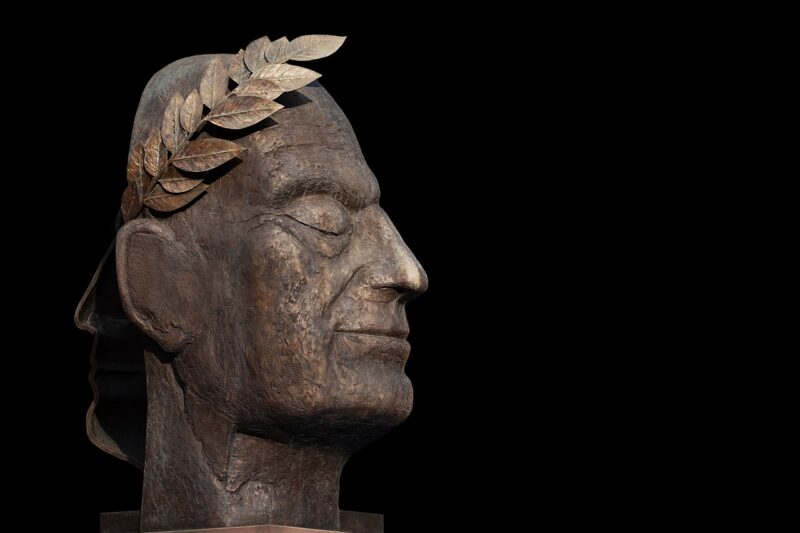How the Bronze Age Laid the Foundation for Modern Civilization
November 15, 2024

The Bronze Age, which began roughly around 3300 BCE and lasted until around 1200 BCE, was a transformative era in human history. The development of metallurgy during this time not only revolutionized tool-making but also laid critical foundations that influenced various aspects of society, including trade, warfare, agriculture, and cultural exchange. In this article, we will explore how the Bronze Age laid the groundwork for modern civilization.
1. The Emergence of Bronze: A Revolutionary Metallurgy
Bronze, an alloy of copper and tin, was a game-changer in the tools and weapons industry. Unlike stone, bronze tools and weapons were stronger, more durable, and could be produced in various shapes and sizes. This innovation allowed for more advanced farming implements, which improved agricultural productivity and efficiency.
Key developments in metallurgy during the Bronze Age included:
- Tool Production: Farmers and craftsmen began using bronze sickles, axes, and knives, which dramatically increased their productivity and farming yields.
- Weaponry Advancements: The introduction of bronze weapons weapons such as swords, daggers, and shields changed the dynamics of warfare, allowing for more organized and sophisticated military strategies.
- Craftsmanship and Artistry: The malleability of bronze allowed artisans to create intricate designs and artworks, leading to a flourishing of culture and craftsmanship in societies across the globe.
The advent of bronze metallurgy significantly improved the quality of life, laying the groundwork for the socio-economic structures that characterize modern civilization.
2. Trade Routes and Economic Development
The increased utilization of bronze led to the establishment of trade networks that stretched across regions and continents. Civilizations began exchanging not only raw materials like tin and copper but also ideas, cultures, and technologies. Some of the most significant trade routes developed during the Bronze Age included:
- The Silk Road: This famous trade route connected China with the Mediterranean, facilitating the exchange of luxury goods, including silk, spices, and of course, metal tools and weapons.
- The Amber Road: Running through Northern Europe, this trade route allowed the movement of amber from the Baltic region to the Mediterranean, creating economic interdependence among various regions.
- Maritime Trade Routes: The development of seafaring technologies enabled the transportation of goods over water, allowing civilizations like the Minoans and Phoenicians to thrive by controlling trade in the Mediterranean.
The interconnectivity brought about by these trade routes laid the foundation for globalization and created a framework for modern economic systems based on trade and commerce.
3. The Rise of City-States and Governance
As surplus agricultural production increased, populations began to grow, leading to the formation of complex societies and urban centers. The Bronze Age saw the emergence of city-states, particularly in regions such as Mesopotamia and the Indus Valley. The rise of these urban centers heralded the development of:
- Centralized Authority: The necessity for organized governance became apparent. City-states needed leadership structures, leading to the establishment of governments, laws, and social hierarchies.
- Written Language: The requirement for record-keeping led to the invention of cuneiform in Mesopotamia and hieroglyphs in Egypt, marking some of the first developments in written communication. This is crucial for legal documentation, trade agreements, and cultural expressions that persist to this day.
- Social Stratification: As city-states became more complex, social classes emerged that shaped cultural, economic, and political dynamics in modern civilization. A division of labor developed, allowing for specialization and enhanced productivity.
These advancements in governance and social structure are vital components of the political systems and societal organization we see in modern nations today.
4. Cultural Developments and Shared Beliefs
The interactions between different civilizations facilitated the exchange of ideas, beliefs, and cultural practices. The Bronze Age is characterized by:
- Religion and Mythology: The Bronze Age saw the rise of organized religions and shared mythologies that governed how societies understood the world around them. Important myths were developed, many of which continue to influence modern religions and philosophies.
- Art and Architecture: Monumental structures such as ziggurats and pyramids were built during this era, reflecting the sophisticated social organization and artistic capabilities of these civilizations. Many civilizations during this period began to express their identities through art, laying the foundation for modern art and architecture techniques.
- Technology and Innovations: The era also brought significant advancements in various fields, including agriculture (the plow), transportation (the wheel), and construction (use of bricks), setting the stage for future technological advancements in human history.
These cultural developments not only enriched the Bronze Age societies but also provided a narrative that informs our understanding of human history, weaving into the tapestry of the modern world’s diverse cultural landscape.
5. Legacy of the Bronze Age in Modern Civilization
The legacy of the Bronze Age remains palpably influential in contemporary society. Its contributions can be seen in the following areas:
- Political Institutions: Modern forms of governance, laws, and political ideologies can trace their roots back to the early political systems established during the Bronze Age. The move toward organized societies created templates for governance that persist today.
- Cultural Syncretism: The melding of different cultures and exchanges during the Bronze Age set a precedent for cultural interaction, shaping nations and identities around the world today. Globalization, with its intricate web of shared cultures, owes a debt to these early interactions.
- Technological Evolution: The innovations of the Bronze Age laid the groundwork for subsequent technological advancements, reinforcing the path that led to the Industrial Revolution and ultimately the modern technology that characterizes the contemporary world.
This era may appear distant, yet its influence on our political, social, and technological frameworks continues to be felt across all facets of modern life.
Conclusion
The Bronze Age was not simply a transitional period; it was a critical juncture that laid the essential foundations for modern civilization. Its advancements in metallurgy, trade, governance, culture, and technology initiated changes that shaped the world and set in motion the trajectory of human history leading up to the present day. Understanding this influential period provides valuable lessons on the interconnections that define our modern world, reminding us that progress is built on the innovative spirits and achievements of those who came before us.







